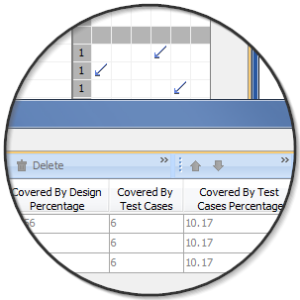On this page
Introduction
The Cameo Requirements Modeler plugin integrates with other products to work with requirements no matter whether you are gathering them, importing from other tools, managing, publishing, analyzing or linking to other models as needed by your business processes, designs or test cases. All of this is available out of the box with this plugin for full model-based requirements engineering support.
The plugin implements the requirements part of the OMG SysML standard and provides a means to import and manage requirements in the model. Requirements Interchange Format (ReqIF) makes the plugin open for requirements interchange among different requirements management tools, including IBM DOORS, PTC Integrity, Polarion, and Siemens Teamcenter.
This product is designed for software engineers, business analysts and business architects, and other users, who need requirement support to ensure traceability from requirements to other model parts. This product is bundled as a part of the solution for systems engineers (Cameo Systems Modeler) and enterprise architects (Cameo Enterprise Architecture) and is available as a plugin for MagicDraw.
Model-based requirements engineering stands in the heart of any software or system modeling project bringing values:
| Seamless traceability to designs and test cases and easy change impact analysis | Improved your team communication with simple and standard notation, clear diagrams, web portal, live requirements coverage metrics and generated requirements reports | Increased quality of your requirements due to the automatic validation and better structuring of your requirements | Saved time and resources by working with single integrated product for requirements, processes, and design | Easy extensibility to fit your needs |
Problem solved
GAP between text based requirements and architecture in the model is the major problem this plugin and model-based requirements solves. This GAP solves the following problems:
- Complicated workflow working with few products and synchronizing results
- Unclear how and which requirements are implemented
- Unclear impact of requirements change
Project sample
Categorization software project
More resources are available on Resource tab
Features
Requirements Management
Other Features
- OMG standard requirements notation – requirements part of SysML standard
- Requirement diagram
- Requirements table
- Relation Maps:
- Structure map – showing requirements hierarchy map
- Derivation map – showing requirements origination map
- Matrices:
- Satisfy – showing requirements coverage with design
- Verify – showing requirements coverage with test cases
- Derive – showing requirement supplier - client relation
- Refine - showing further refinement of requirements
- OMG Requirements Interchange Format (ReqIF) files import from IBM Rational DOORS 9.4, 9.5, Next Generation, Polarion, PTC Integrity, Siemens TC, and other ReqIF 1.0 compatible data sources
- Predefined reports
- Requirements model report for whole model overview
- Web portal for software (coming together with MagicDraw) and system engineering (coming together with SysML plugin or Cameo Requirements Modeler).
- Validation suites: Completeness and correctness
- Traceability schema
- Coverage metrics for requirements coverage with design and testcases. Model-based metrics engine gives easy custom metrics creation ability
- Model-based glossary, and much more available from MagicDraw products as a platform















